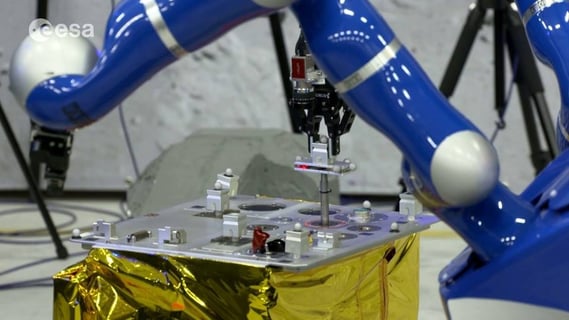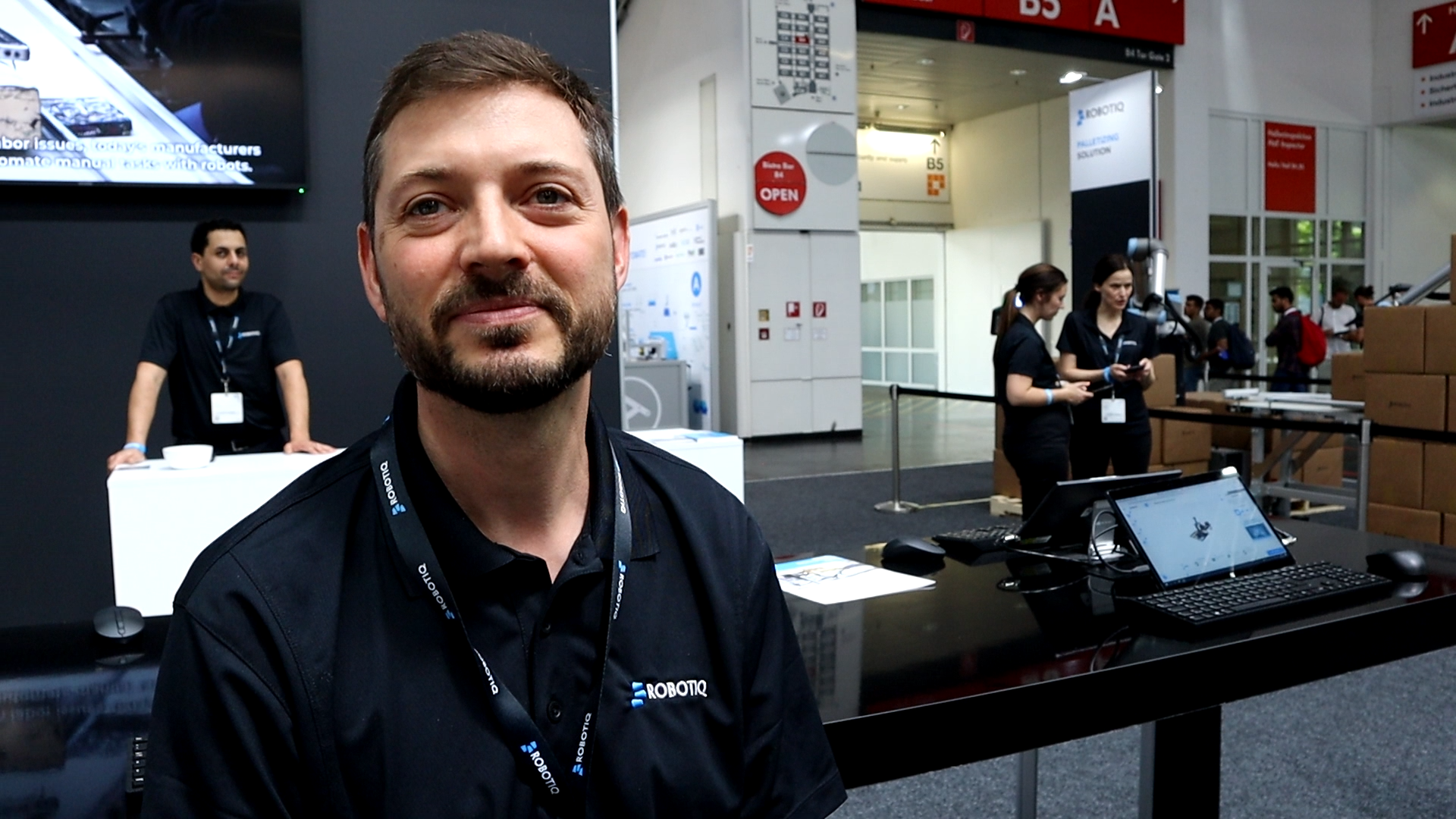Robotiq Grippers Controlled From Space

Posted on Sep 23, 2015 in News
4 min read time
At first I thought it was one of the simulations that we usually see in the robotic industry. A bunch of programmers are around a test robot and they are testing a device to verify if it would be viable in space. But this time, it goes one step further. There is actually someone in space that is controlling a rover on earth and what is exciting is that it uses Robotiq Grippers.

The headline is quite right: ''Astronaut Aboard the ISS Controls a Robot on Earth Using Haptic Feedback''. In fact, astronaut Andreas Mogensen currently aboard the International Space Station (ISS) is controlling a 2 arm rover using haptic devices. The project run by the European Space Agency (ESA) and TU Delft Robotics Institute is set to potentially control a robot on a given planet by a user that would be remote in the ISS.
To get a better understanding of what is happening, watch the following video and see how an astronaut is controlling a robot on earth by simply using his arm motions.
Haptic Control
Haptic control, to make a long story short, is the action of controlling and having feedback from a mechatronic device. It is often used in medical applications where doctors using surgical robots need to feel what they are doing on the patient. By using haptic technology, you are able to control the robot and you are also able to feel what it feels.
In this particular situation, the astronaut can feel if the object it is inserting is in the right spot or if there is friction. When the part is not well aligned, it can realign the robot arm and insert it correctly. This is all possible because of the different sensors used in the robotic cell. The astronaut is then controlling the robot using a PC tablet and a joystick. The tablet is used to select which part of the robot is controlled and the simple joystick is doing the actual control of the device selected.
The Robot
What the robot is all about? At first glance it looks like some futuristic thing straight out of a movie. In fact, it is composed of off the shelf devices that are put together to make a functional space robot.
The robot arms: The 2 blue arms are Kuka's lightweight robots. These robots are used for their very fine force detection sensors and how they can be operated. The robot is precise and smooth which is perfect for haptic applications. As you can probably see, most of the haptic motions are really abrupt. If you are using a robot that is brusque and you add sharp motions, it makes the robot shaky and not precise at all. By using a Kuka IIWA, this problem is partially solved.

The manipulators: The manipulators are Robotiq 2-Finger 85 Adaptive Grippers. We are pleased to see that this project was using our Grippers. In fact, with a simple Gripper, the robot can do a lot of different tasks that require dexterity. Since the mobile manipulator needs to open doors, press buttons, insert parts in holes, the gripper needs to be versatile and simple to use. Another cool aspect is that our Gripper is force limited, so I am guessing that they have found a way to read the force applied on the fingers and use this data in the feedback loop of the haptic system. Notice that one of the Grippers is equipped with a Force-Torque Sensor to feel if the part is well aligned in its position.

The vision system: As there is very little information on the vision system it is hard to determine what the system is using. In the video we can see that they are using a 2D vision system. However, for such applications it would be surprising not to see 3D vision systems or lasers to gauge distances. The cool thing is that the whole vision system is placed on three Powerball Lightweight robot from Schunk. This means that with 6 DOF the vision system can be placed in various positions and can see pretty much everything that needs to be seen for this kind of application. There is also a camera at the front and at the back of the rover to see ''behind the shade'' created by the vehicle. There is also a camera at the robot wrist.
The rover: The platform is a 4 wheeled platform with independent wheels to be able to turn on itself and perform crazy motions on uneven surfaces. It made me think of the Clearpath Grizzly model with a ''pimp my ride'' kind of cover. However I don't have any information on the fundamentals of the mobile platform so I am guessing it might be custom made.
We are looking forward to having more footage of this application and we are pleased that our Grippers have been chosen by these prestigious organizations. I just can't wait to see what’s next with our Grippers. To have a better idea of where and how our Grippers are being used take a look at the link below.






Leave a comment